Figures & data
Figure 1. Flow diagram of patient enrollment. TWG: Tripterygium wilfordii polyglycoside; ARB: angiotensin receptor blocker.
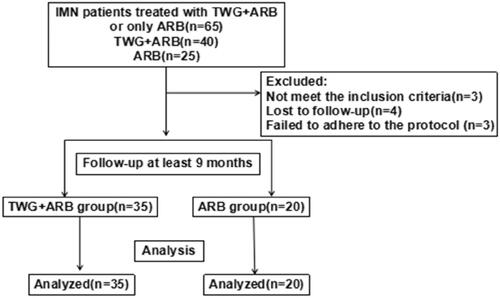
Table 1. Baseline characteristics of patients.
Table 2. Baseline Characteristics of anti-PLA2R-positive patients.
Figure 2. Percentage of complete and partial remissions in the TWG + ARB and ARB therapy groups. #shows that the remission rate was significantly greater in the TWG + ARB group compared to the ARB group during the treatment (p < 0.05). TWG: Tripterygium wilfordii polyglycoside; ARB, angiotensin receptor blocker.
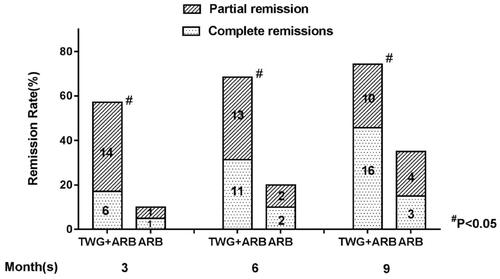
Figure 3. Kaplan-Meier curves for probability of overall remission for the TWG + ARB and ARB therapy groups. TWG: Tripterygium wilfordii polyglycoside; ARB: angiotensin receptor blocker; PLA2R, phospholipase A2 receptor.
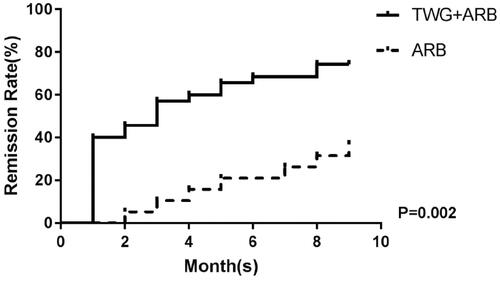
Figure 4. The changes of serum albumin (A) and proteinuria (B) in the TWG + ARB and ARB therapy groups. (A)*&statistically a significant elevation of serum albumin between the end of treatment and baseline in the TWG + ARB group and ARB group (P < 0.01); $comparing to ARB group, the TWG + ARB group showed more obvious elevation of albumin level in 6 months and 9 months (p = 0.021, p = 0.001). TWG: Tripterygium wilfordii polyglycoside; ARB: angiotensin receptor blocker. (B)*&statistically a significant reduction of proteinuria between the end of treatment and baseline in the TWG + ARB group and ARB group (p < 0.01); #The reduction of daily proteinuria after 6 and 9 months of treatment were more obvious in the TWG + ARB group (p = 0.008, p = 0.001). TWG: Tripterygium wilfordii polyglycoside; ARB: angiotensin receptor blocker
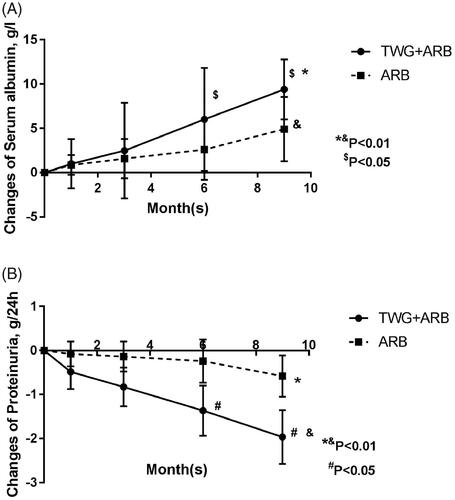
Figure 5. Responses of patients who were positive or negative for anti-PLA2R antibodies during follow-up. TWG: Tripterygium wilfordii polyglycoside; ARB: angiotensin receptor blocker; PLA2R: phospholipase A2 receptor.

Figure 6. Responses of patients who were positive or negative for anti-PLA2R antibodies during follow-up. #shows that the remission rate was significantly greater in the TWG + ARB group compared to the ARB group among patients with anti-PLA2R positive (P < 0.05). TWG: Tripterygium wilfordii polyglycoside; ARB: angiotensin receptor blocker
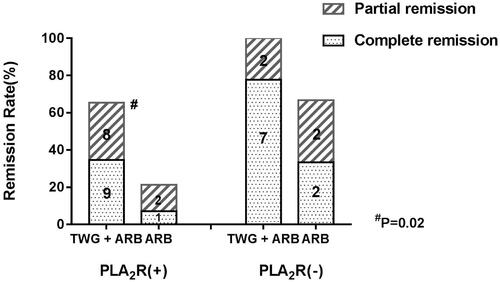
Figure 7. The variation of anti-PLA2R level in the TWG + ARB and ARB therapy groups. *&statistically a significant reduction of anti-PLA2R level between the start and end of treatment in the TWG + ARB group and ARB group (p < 0.01); $comparing to ARB group, the mean anti-PLA2R levels after 6 and 9 months of treatment were significantly lower in the TWG + ARB group (p = 0.016, p = 0.005). TWG: Tripterygium wilfordii polyglycoside; ARB: angiotensin receptor blocker.

Table 3. Remission rates and p value of the TWG + ARB group compared to ARB group.
Table 4. Laboratory parameters during the treatment of the two groups.
Table 5. Predictor variables related to survival to the outcome of progression of renal disease (assessed as complete remission) at the multivariable Cox regression analysis.
Table 6. Adverse events.
